|
McCloud River Lumber Company:
Horse and High Wheel Logging |
|
|
|
The basic technology behind the high wheel, also known as the big wheel among many other names, appears to have existed in Europe since at least Midevil times. Variations on
high wheels were in use in the northeastern and southern parts of what would become the United States during the colonial period, especially in transporting the giant oak logs prized for ship building. High wheels
in their ultimate form consisted of a set of 12-foot or more diameter wheels connected by an axle, with a tongue extending out the front end. Logs would be chained to the axle for movement. Early high wheels had
no brakes, but several manufacturers, including Redding Iron Works, developed slip tongue models in which the tongue was allowed to slide, which would lift the front end of the logs off the ground when the wheels
started to move. On downgrades the tongue would slide backwards, lowering the logs to the ground where they would serve as a brake. High wheels were extensively used in the upper Midwest region and south by the
last half of the 1800s and very quickly spread to the western states. The pine regions of northeastern California and central Oregon were ideally suited to the technology. The McCloud River Lumber Company used high wheels to log the flatter parts of its country, and tended to keep the skidding/yarding distance from stump to railroad at 440 yards or less. After a tree had been felled and bucked swamping crews would remove the brush from around the logs, which would then be rolled apart by horses. The high wheels would then roll over the top of each log, which would be chained up for the trip to the railhead. The use of horses and wheels appears to have ended around 1920, partially because they simply couldn't compete with advancements in steam power and partially because the company had moved out of the relative flatlands of the McCloud River valley and into the increasingly mountainous country much better suited to steam donkey logging. |
|
|
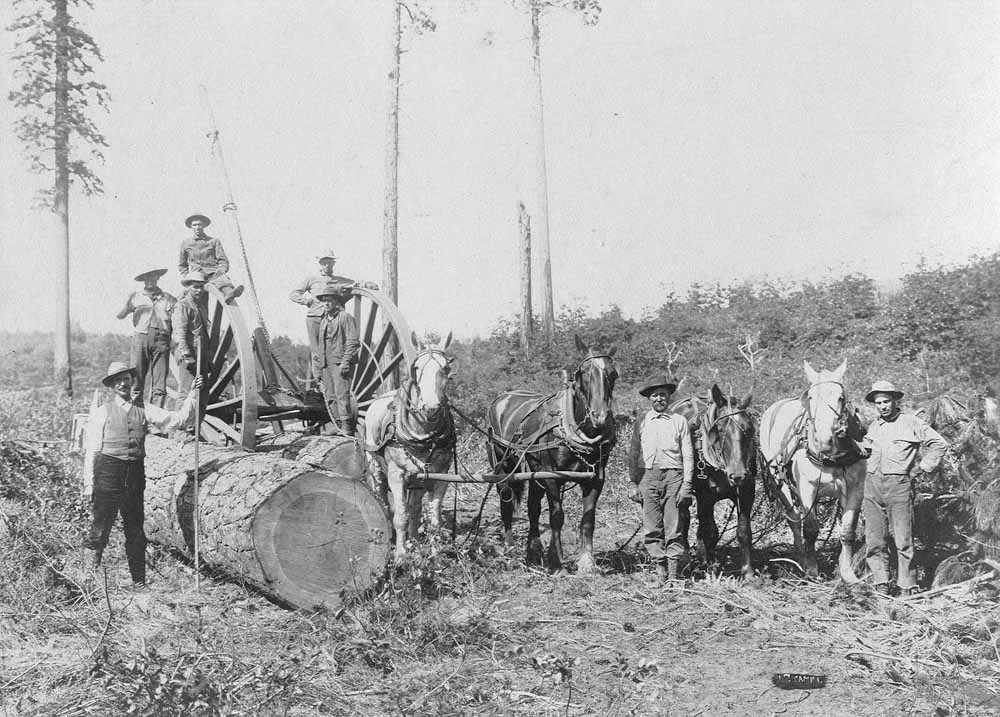 |
|
High wheel logging at work in the early days. The horse team at right is being used to roll the logs apart, while the team in the middle is harnessed to the set of wheels over a log. Heritage
Junction Museum.
|
|
|
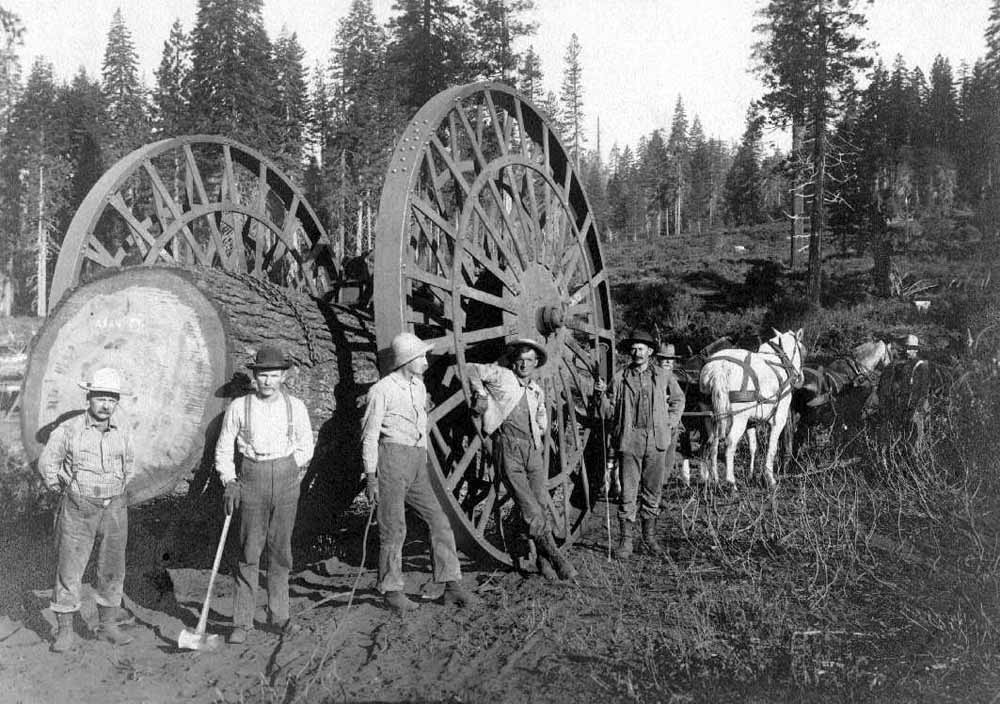 |
|
High wheels somewhere in the Mt. Shasta region in an image dated 1903. Miller photograph, Kuhlman collection, courtesy Martin Morisette.
|
|
|
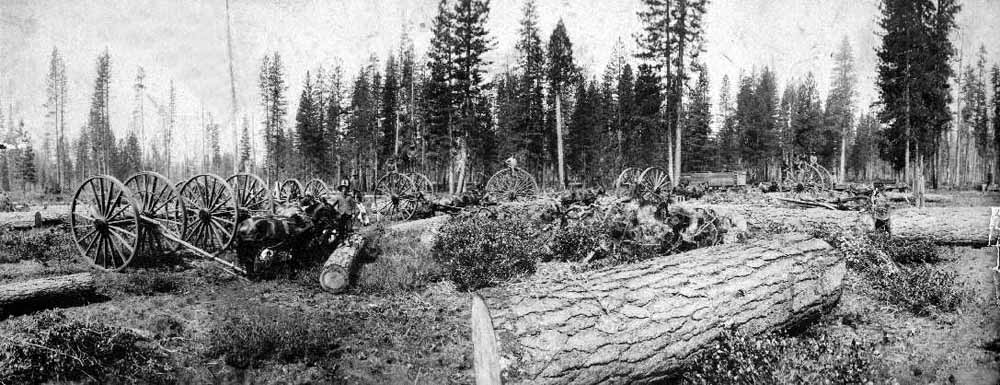 |
|
A gathering of high wheels in the McCloud woods. Kuhlman collection, courtesy Martin Morisette.
|
|
|
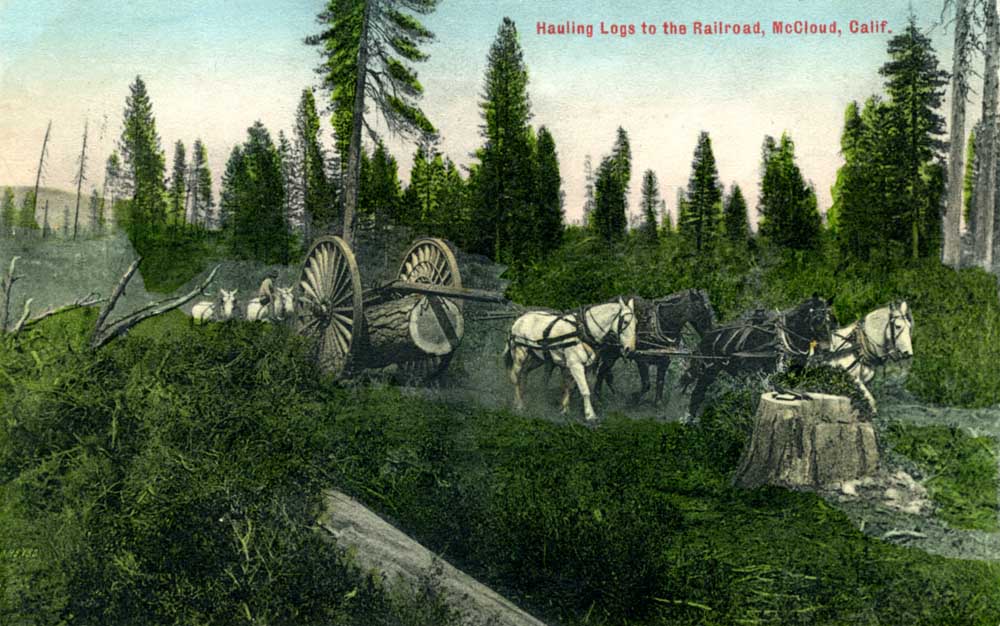 |
|
A colored postcard from 1909 showing horses and high wheels at work. Jeff Moore collection.
|
|
|
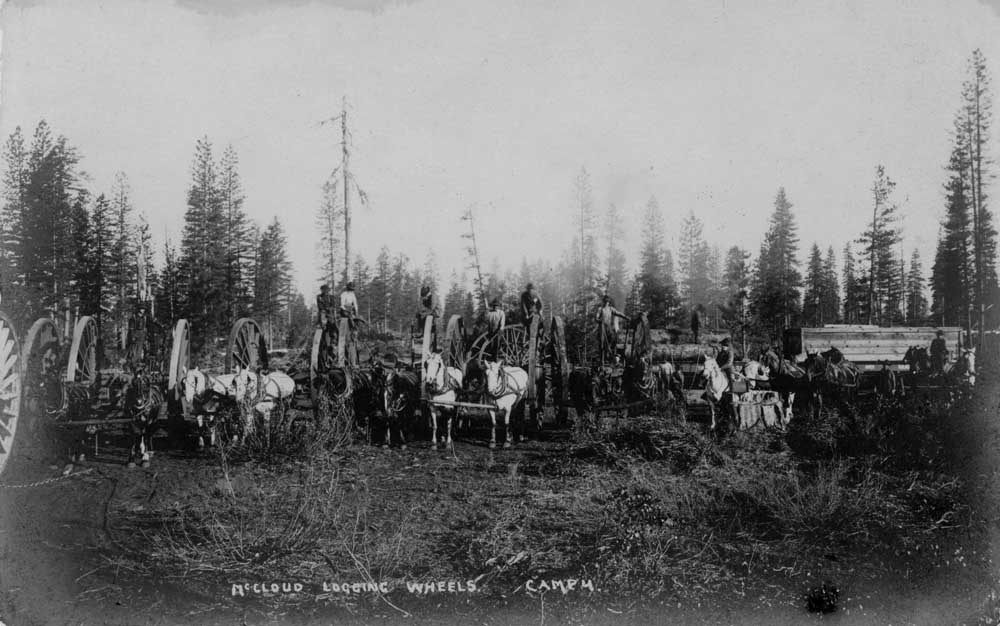 |
|
Another gathering of high wheels in the woods. Note the wooden water car in the back right part of the frame. Jeff Moore collection.
|
|
|
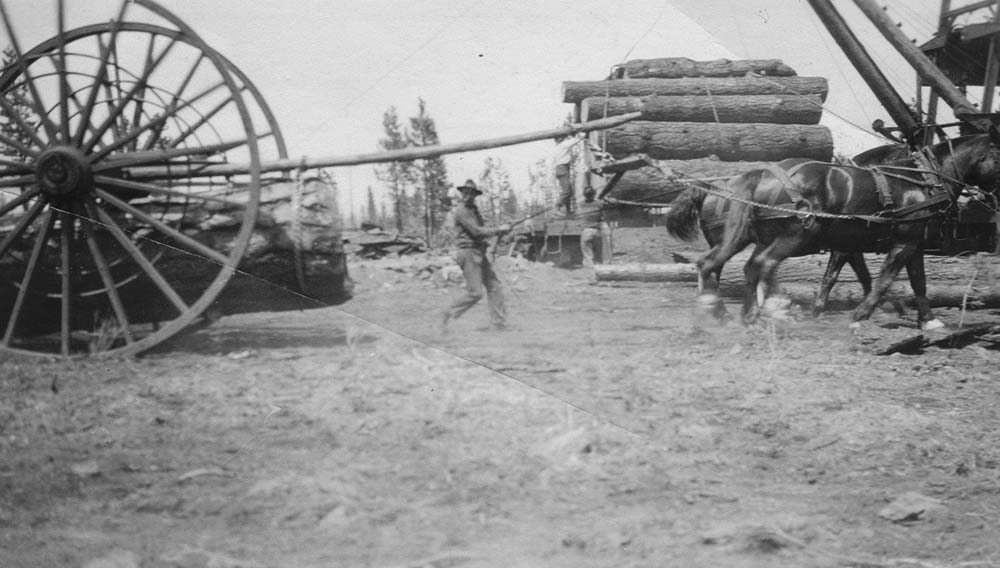 |
|
High wheels arriving at the landing towards the end of the horse logging era. Haritage Junction Museum.
|
|
|
 |
|
One last view of horses and high wheels next to a McGiffert loader. Heritage Junction Museum.
|
|
|